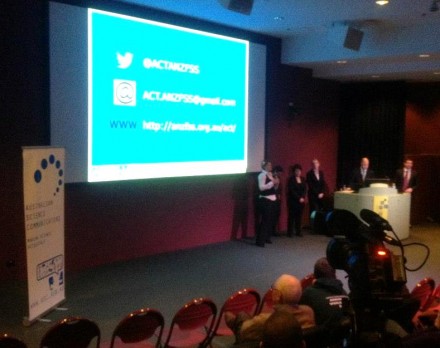The Incredible Inner Space Exhibit currently on as part of National Science Week at the Customs House in Sydney is a great example of how to bring science to the public. The exhibit uses sculpture, photography, and video to engage an audience.
The ground floor of the customs house is a relaxing mixed-use space. It serves as the foyer to the Customs House City of Sydney Library, houses a café, and additionally has a selection of daily newspapers available. Businessmen and women come through to get a coffee and relax, and tourists regularly visit in groups to view the miniature model of the city through the foyer floor. The scientific artwork on display draws in all these different types of people to get them to engage with the material presented in a completely different setting then that of an educational museum.
And that’s the great thing about the exhibit, in that it reaches an audience who would not normally be the type to go to, the Australian Museum. Instead, the artwork speaks for itself: crystal structures of metals depicted in glass sculpture that make you pause on your way past, or the title for a video that pulls you across the room, or the vivid colors and geometrical patterns of stunning microscopy photographs that entice you out of your chair to have a closer look. Clear captioning that explains in depth what is shown supports all of the displays. These captions are in no way dumbed down for the audience, but are presented with a complete absence of jargon or unnecessary description.
Importantly, the scale of the image and the type of microscopy used are described. Importantly, many visitors had expressed their enjoyment of the exhibition: “thank you for sharing this research with us”, “who knew the details to be discovered by looking through a microscope”, and my personal favorite, “I just wish I was a cool scientist”.
For visitors who become more interested in the material shown, there is a handy take home brochure that explains more about a select number of displays, with the inclusion of a handy pictographic ruler that illustrates the scale on which the displays are presented. Additionally, many of the images can be found online and downloaded for perusal (great as a screensaver).
As I sat observing the exhibition, a group of tourists came in to view the city model, and several people from the group broke off from the main bunch, branching out to look at the scientific exhibit. Some even took photos of the microscopy and crystal structures, and it was gratifying to know that science had now become a souvenir moment to remember about Sydney.



